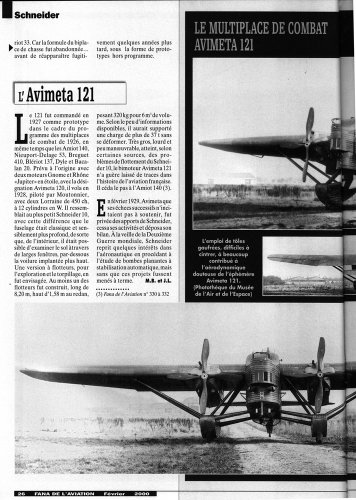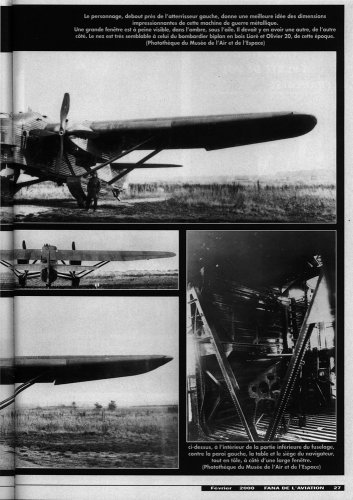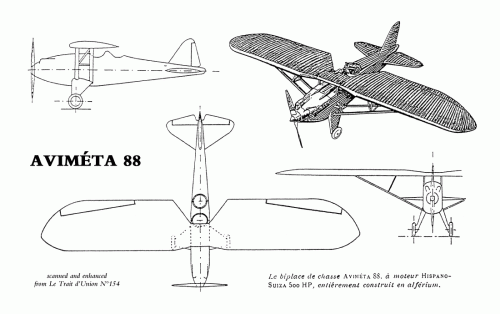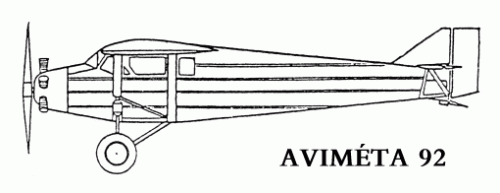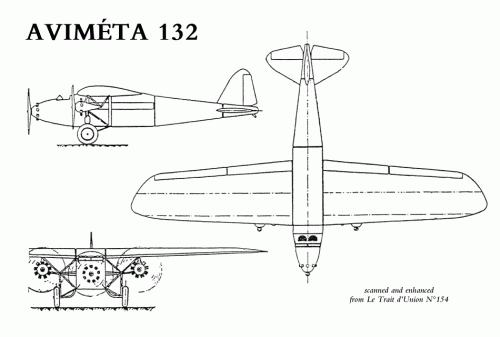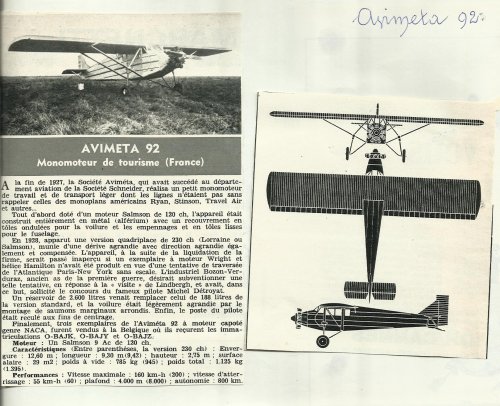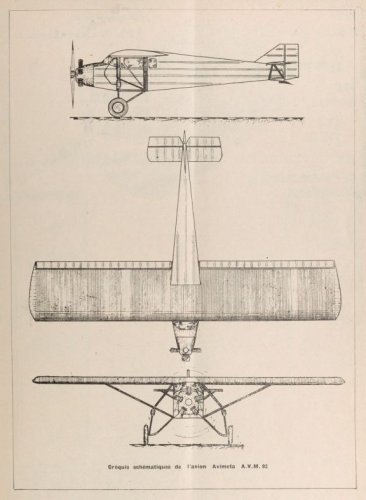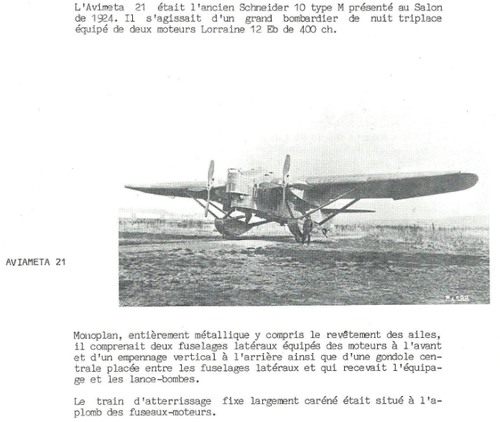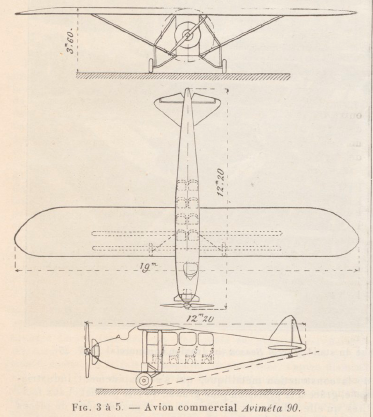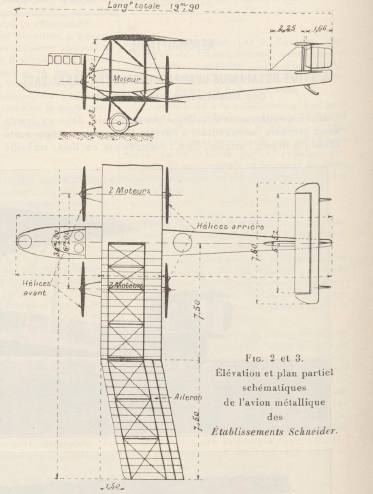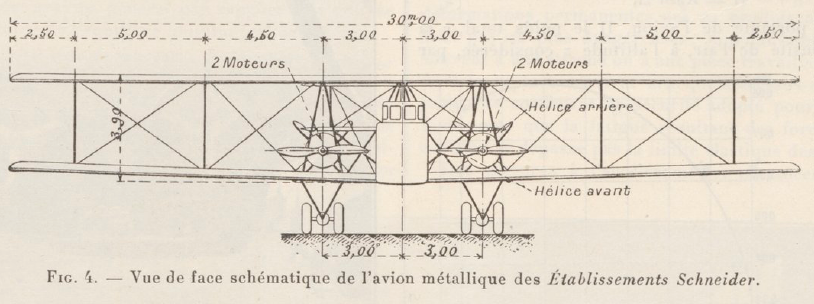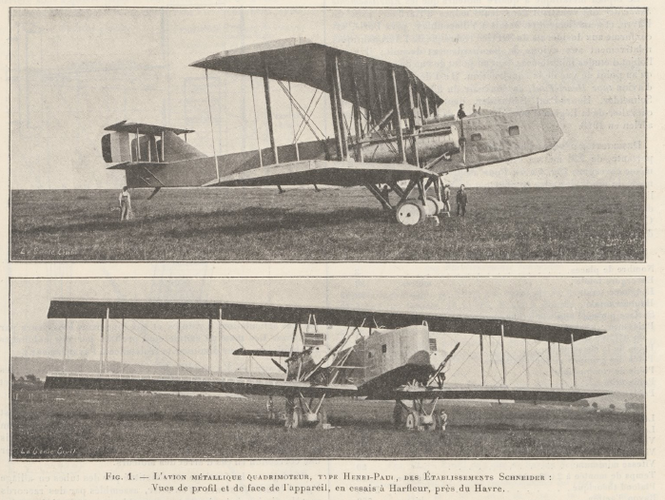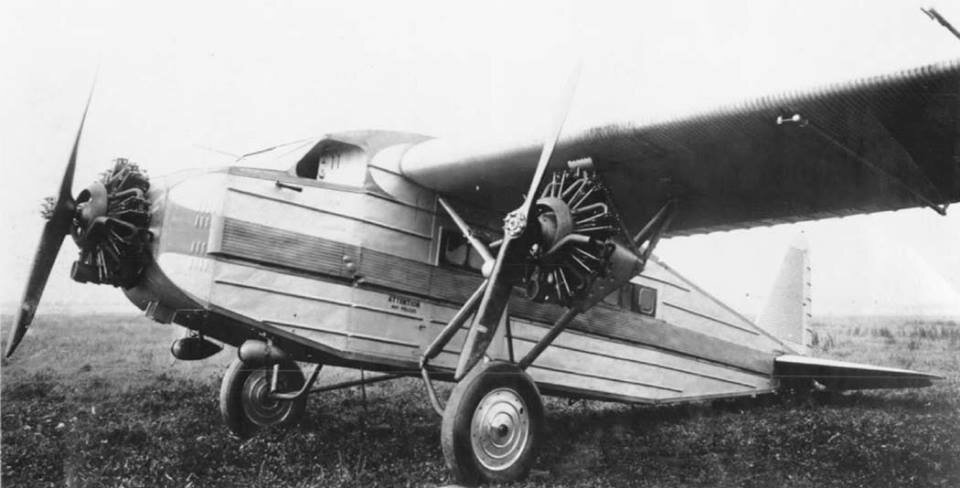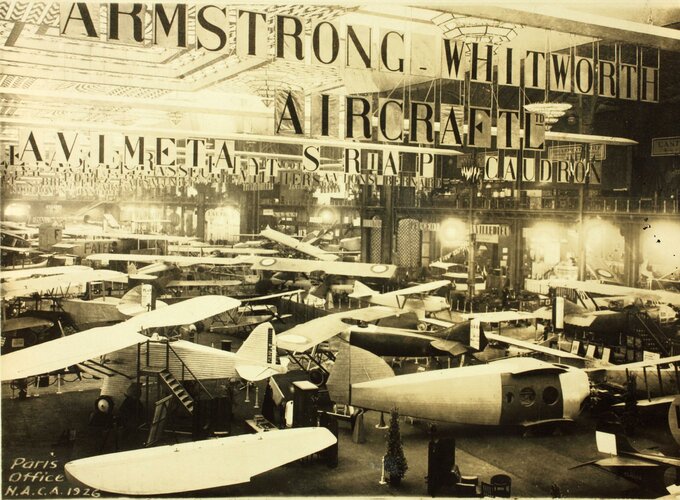You are using an out of date browser. It may not display this or other websites correctly.
You should upgrade or use an alternative browser.
You should upgrade or use an alternative browser.
Aircraft from Schneider's Aviméta company
- Thread starter juanT
- Start date
Silencer1
That now I am the Ruler of the Queen's Navee!
- Joined
- 3 August 2009
- Messages
- 897
- Reaction score
- 562
Hi!
There were an article in French "Fana de l'Aviation" (February 2000) magazine.
It covers the company's activity very well, but there was no 3-view of this bird there...
Update - two pictures from above mentioned magazine added
Good luck in searches!
juanT said:i am looking 3-view of the AVIMETA 121 "avion de combat multiplace"
There were an article in French "Fana de l'Aviation" (February 2000) magazine.
It covers the company's activity very well, but there was no 3-view of this bird there...
Update - two pictures from above mentioned magazine added
Good luck in searches!
Attachments
- Joined
- 25 June 2009
- Messages
- 14,141
- Reaction score
- 4,333
In 1916 the Schneider factory at Le Havre-Harfleur obtained the production of a series of 1000 12-cylinder 370 hp engines. Schneider was also able to recover fragments of the Zeppelin LZ.96/L49's frame, which had crashed at Bourbonne-les-Bains on 20 October 1917, and compared their analysis with the company's own research on aluminum. This resulted in the creation of the Alférium, a forged alloy which was produced at their Montchanin plant and used in the manufacture of airplane propellers from 1920 onwards.
In their efforts to diversify Schneider decided to focus on the aviation industry and devoted the Le Havre-Harfleur factory to this activity. In 1918 the Henri-Paul & Jean Schneider Participation was created, an association for the study of any matter relating to the construction and fitting out of airplanes or seaplanes. A social fund of 400,000 francs was granted to the company. Jean Schneider was appointed administrator, with the main objective to respond to a request from the Secrétariat d’État de l’Aéronautique militaire et maritime ("State Secretariat for Military and Maritime Aeronautics"): A program for new aircraft with structure and covering entirely made of metal. Two models were considered, a handy, lightweight two-seater (the S2) and a three-seater armed with a gun of 75 mm (the S3) to equip three squadrons.
Designed to meet the S3 program, Henri Paul Schneider took the air in September 1922 and was exhibited at the 8th Air Show at the Grand Palais in December 1922 as a four-seater night bomber. But the program was soon abandoned. A second prototype was produced in Harfleur, the Schneider 10M. As this machine had a rough landing shortly after its first flight, the Le Havre plant was used for other productions and in December 1926 Schneider's aviation department was transformed into an independent company called Aviméta.
The Société pour la construction d’AVIons METAlliques (or Aviméta in short) was set up in Paris, on rue Montalivet, with workshops on Allée du Midi at Courbevoie. With a capital of two million francs, it was directed by Eugene Lepère, while engineering was entrusted to Louis Delasalle. The Aviméta 88 fighter and Aviméta 121 multiplace combat aircraft were failures. The three-engined Aviméta 132 transport failed to attract any customer and the single-engine Aviméta 92 transport and tourism aircraft was built in only a few examples.
As a result, the Schneider Group withdrew in 1929 its support to Aviméta, which had no choice but to file for bankruptcy.
Original article (in French):
http://fr.wikipedia.org/wiki/Avim%C3%A9t
In their efforts to diversify Schneider decided to focus on the aviation industry and devoted the Le Havre-Harfleur factory to this activity. In 1918 the Henri-Paul & Jean Schneider Participation was created, an association for the study of any matter relating to the construction and fitting out of airplanes or seaplanes. A social fund of 400,000 francs was granted to the company. Jean Schneider was appointed administrator, with the main objective to respond to a request from the Secrétariat d’État de l’Aéronautique militaire et maritime ("State Secretariat for Military and Maritime Aeronautics"): A program for new aircraft with structure and covering entirely made of metal. Two models were considered, a handy, lightweight two-seater (the S2) and a three-seater armed with a gun of 75 mm (the S3) to equip three squadrons.
Designed to meet the S3 program, Henri Paul Schneider took the air in September 1922 and was exhibited at the 8th Air Show at the Grand Palais in December 1922 as a four-seater night bomber. But the program was soon abandoned. A second prototype was produced in Harfleur, the Schneider 10M. As this machine had a rough landing shortly after its first flight, the Le Havre plant was used for other productions and in December 1926 Schneider's aviation department was transformed into an independent company called Aviméta.
The Société pour la construction d’AVIons METAlliques (or Aviméta in short) was set up in Paris, on rue Montalivet, with workshops on Allée du Midi at Courbevoie. With a capital of two million francs, it was directed by Eugene Lepère, while engineering was entrusted to Louis Delasalle. The Aviméta 88 fighter and Aviméta 121 multiplace combat aircraft were failures. The three-engined Aviméta 132 transport failed to attract any customer and the single-engine Aviméta 92 transport and tourism aircraft was built in only a few examples.
As a result, the Schneider Group withdrew in 1929 its support to Aviméta, which had no choice but to file for bankruptcy.
Original article (in French):
http://fr.wikipedia.org/wiki/Avim%C3%A9t
- Joined
- 25 June 2009
- Messages
- 14,141
- Reaction score
- 4,333
- Joined
- 26 May 2006
- Messages
- 33,572
- Reaction score
- 13,701
Hi,
Model-130 was single engined transport aircraft project,powered by one 450 hp Lorraine 12 Eb engine.
Model-131 was twin engined transport aircraft project,powered by two 380 hp
Gnome-Rhone Jupiter engines.
Model-130 was single engined transport aircraft project,powered by one 450 hp Lorraine 12 Eb engine.
Model-131 was twin engined transport aircraft project,powered by two 380 hp
Gnome-Rhone Jupiter engines.
Last edited:
- Joined
- 26 May 2006
- Messages
- 33,572
- Reaction score
- 13,701
hesham said:Model-130 was single engined transport aircraft project,powered by one 450 hp
Lorraine 12 Eb engine.
Model-131 was twin engined transport aircraft project,powered by two 380 hp
Gnome-Rhone Jupiter engines.
Also Avimeta-130 was also can be powered by alternative 600 hp engine.
L'Aeronautica 1927-12
Khunakovich
ACCESS: Restricted
- Joined
- 18 January 2020
- Messages
- 1
- Reaction score
- 0
Does anybody got good quality data on 121?
- Joined
- 26 May 2006
- Messages
- 33,572
- Reaction score
- 13,701
the Avimeta Model-94 was a version of Model-92 fitted with one 230 hp Lorraine 7 Ma
engine,also the Model-95 was a version of Model-92 with different or unknown engine.
From Ailes 1928.
Attachments
- Joined
- 26 May 2006
- Messages
- 33,572
- Reaction score
- 13,701
From Tu 144.Hi,
the earlier Project Model-120 was a combat attack/bomber,powered by two 450 hp
Lorraine engines.
Attachments
- Joined
- 3 September 2006
- Messages
- 1,432
- Reaction score
- 1,354
This is the Schneider type Henri-Paul of October 1922. More at https://fr.wikipedia.org/wiki/Schneider_Henri-Paul
Last edited:
- Joined
- 25 June 2009
- Messages
- 14,141
- Reaction score
- 4,333
Beautiful three-view and photos of the Avimeta A.V.M. 132.
Source: "AVIMETA" THREE-ENGINE COMMERCIAL MONOPLANE, TYPE A.V.M. 132
N.A.C.A. AIRCRAFT CIRCULAR No. 63 (Washington, December, 1927)
https://ntrs.nasa.gov/api/citations/19930090646/downloads/19930090646.pdf


Source: "AVIMETA" THREE-ENGINE COMMERCIAL MONOPLANE, TYPE A.V.M. 132
N.A.C.A. AIRCRAFT CIRCULAR No. 63 (Washington, December, 1927)
https://ntrs.nasa.gov/api/citations/19930090646/downloads/19930090646.pdf
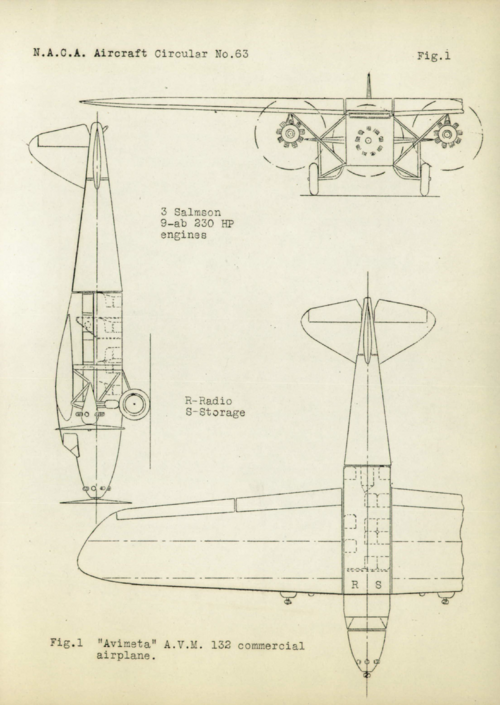
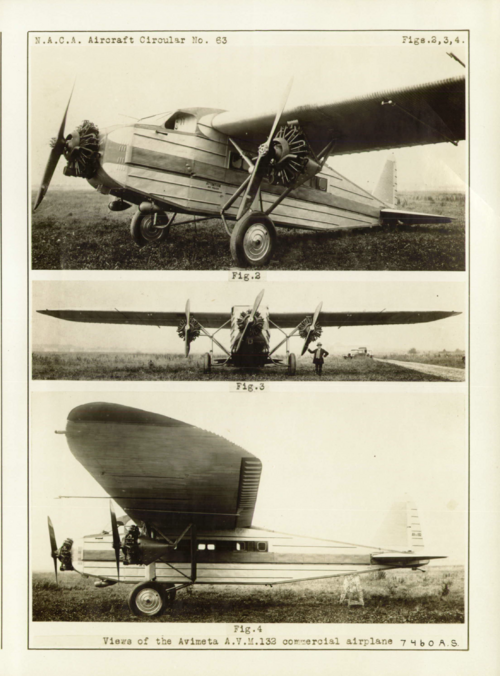
Attachments
rlandmann28
ACCESS: Restricted
- Joined
- 31 October 2023
- Messages
- 4
- Reaction score
- 7
What is the source for those two snippets please @hesham ? And are we sure that the 21 and 121 were the same aircraft?and here it is.
- Joined
- 25 July 2007
- Messages
- 4,167
- Reaction score
- 3,835
... And are we sure that the 21 and 121 were the same aircraft?
As you suspect, 'No' ... the Aviméta 21 and 121 were not the same aircraft.
The Aviméta 21 seems to have been a redesignated (and possibly revised/updated) 'Henri-Paul', retaining that Schneider design's four engines in their push-pull configuration. The Aviméta 121 was a smaller, twin-engined BCR prototype.
- Joined
- 26 May 2006
- Messages
- 33,572
- Reaction score
- 13,701
The source is Trait d'Union magazineWhat is the source for those two snippets please @hesham ? And are we sure that the 21 and 121 were the same aircraft?
rlandmann28
ACCESS: Restricted
- Joined
- 31 October 2023
- Messages
- 4
- Reaction score
- 7
Ah! That actually makes sense! Thank you!The Aviméta 21 seems to have been a redesignated (and possibly revised/updated) 'Henri-Paul'
rlandmann28
ACCESS: Restricted
- Joined
- 31 October 2023
- Messages
- 4
- Reaction score
- 7
If @Apophenia 's theory is correct, it was a redesignation of the Schneider Henri-Paul (and this makes perfect sense to me). Other sources conflate it with the Aviameta 121 already pictured in this thread.Does exist a photo or drawing of the Avimeta 21?
I guess what would prove the point is a contemporary textual description of the 21 that matches the Henri Paul and does not match the 121. (Number of engines would be an obvious distinction!)
Schneider Henri Paul (picture found at https://alternathistory.ru/kogda-ko...ochnoj-bombardirovshhik-schneider-henri-paul/ ):
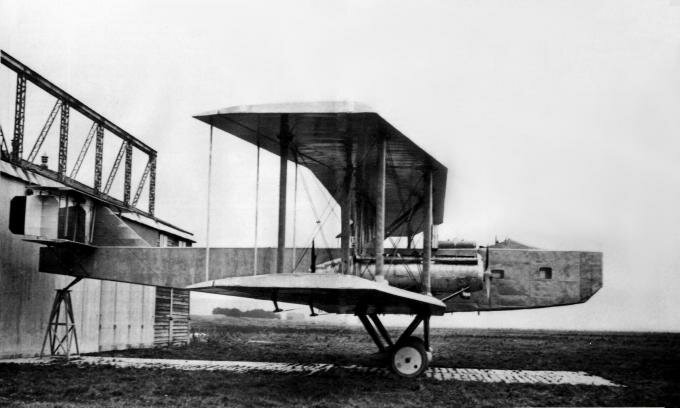
- Joined
- 25 July 2007
- Messages
- 4,167
- Reaction score
- 3,835
Yes,there is a three designs,Avimeta 21,120 & 121.
Right. The unbuilt Aviméta 120 attack bomber concept matured into the Aviméta 121 BCR prototype. Alas, there's not much out there about the earlier Aviméta 21.
-- https://www.secretprojects.co.uk/threads/schneider-and-aviméta-aircraft-designations.43450/
Similar threads
-
-
-
-
Reconnaissance Airplane Type A 2 of the Zeebrugge Aeronautical Construction Comp
- Started by ACResearcher
- Replies: 4
-
Schneider Creusot all metal twin-fuselage monoplane 1924.
- Started by theponja
- Replies: 13


